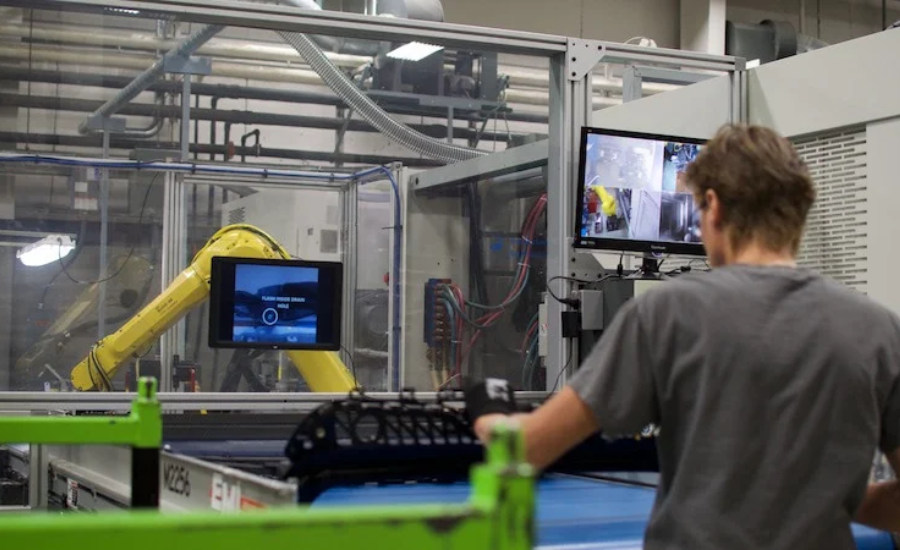Streamlining Production with Precision Molding Techniques
Precision molding techniques have revolutionized manufacturing by delivering parts with unparalleled accuracy and efficiency. For industries ranging from automotive to medical devices, these methods ensure superior product quality while minimizing waste and production time. But how exactly do precision molding techniques optimize production processes, and which approaches are best suited for specific applications?
This blog dives into the world of precision molding, exploring its benefits, best practices, and how modern technology is enhancing manufacturing workflows. If you’re ready to improve efficiency and product quality, keep reading!
What Are Precision Molding Techniques?
Precision molding is the process of creating high-quality, dimensionally accurate parts, typically from materials like plastics or resin. The goal is to achieve exceptionally tight tolerances, ensuring that every molded piece meets design specifications perfectly. This approach is critical in applications where accuracy, consistency, and performance are non-negotiable.
The two most commonly used precision molding techniques are injection molding and compression molding. Injection molding is suitable for producing small to medium-sized parts with intricate designs, while compression molding is ideal for larger components with simpler shapes.
Ultimately, the precise approach depends on product specifications, material type, and production volume.
Why Precision Molding Matters in Modern Manufacturing
Whether it’s producing gear shafts for vehicles or medical implants, the demand for perfection in manufacturing is higher than ever. Precision molding has become essential for meeting this demand, offering several key benefits:
- Enhanced Product Quality
Utilizing state-of-the-art molding technologies ensures that each piece meets exact dimensional specifications. This is particularly vital for industries like aerospace and healthcare, where safety and performance hinge on precision.
- Faster Production Cycles
Automation and refined molding techniques allow for reduced production times, boosting output without sacrificing quality.
- Cost Efficiency
Precision molding minimizes waste, thanks to the accurate application of materials and elimination of faulty parts during production.
- Material Versatility
From metals to plastics, precision molding is compatible with an extensive range of materials to serve different industries. Companies frequently turn to specialists offering thermoplastic molding services to benefit from innovative materials that combine durability with cost-effectiveness.
These reasons highlight why precision molding is a preferred strategy for manufacturers eager to streamline their production workflows.
Key Techniques for Streamlined Production
1. Injection Molding
Injection molding remains the gold standard for high-volume production of detailed parts. Here’s how it works:
- Molten material is injected into a precisely designed mold.
- Rapid cooling solidifies the material into the desired shape.
- The finished part is ejected, with minimal waste produced.
This technique is most commonly used for thermoplastics, making it ideal for applications such as packaging materials, electronic casings, and medical-grade components.
2. Compression Molding
Compression molding, on the other hand, involves compressing material (usually thermoset plastics) into molds under high pressure and heat. This results in durable parts ideal for heavy-duty applications, like automotive or industrial equipment.
While slower than injection molding, compression molding is perfect for producing large, thick-walled components.
3. Overmolding
For manufacturers looking to combine different materials into a single product, overmolding is an excellent option. This technique uses two separate molding cycles to fuse materials, often combining rugged functionality with softer, ergonomic designs. For instance, overmolding is frequently used to create the rubberized grips on handheld tools.
4. 3D Printing Integration
Modern precision molding increasingly incorporates 3D-printing technology. By creating prototypes faster and at a lower cost, manufacturers can refine mold designs before beginning full-scale production. This reduces costly trial-and-error processes while maintaining the tight tolerances required in precision molding.
Best Practices for Implementing Precision Molding Techniques
To maximize the efficiency of precision molding, manufacturers should consider the following steps:
1. Choose the Right Materials
Selecting materials compatible with the desired product’s functionality and longevity is crucial. For example, thermoplastic materials are ideal for flexibility and chemical resistance, while thermoset plastics excel in high-heat environments.
2. Invest in Advanced Tooling
High-quality molds are foundational to precision molding. Investing in advanced tooling technologies like CNC-machined molds ensures consistently superior results, greatly reducing the likelihood of defects.
3. Leverage Automation
Automation technology, including robotic arms for part removal and quality checks, can drastically reduce production time while improving repeatability. Automation also ensures optimal material usage by eliminating human error.
4. Utilize Real-Time Monitoring
Modern precision molding equipment often features IoT-enabled sensors that offer real-time performance insights. This allows operators to detect anomalies early and make adjustments, avoiding wasted time and resources.
5. Collaborate with Experienced Partners
Outsourcing to experienced professionals skilled in specialized molding techniques can accelerate production goals. For instance, partnering with thermoplastic molding services ensures access to expertise and advanced tools to meet complex design requirements.
Real-World Applications of Precision Molding
Precision molding isn’t merely theoretical—the practical applications are vast and diverse across industries:
- Healthcare: Creating medical devices like syringe components, pacemaker housings, and prosthetic parts often relies on injection molding for accuracy and patient safety.
- Automotive: From dashboard panels to fuel system components, precision molding ensures that parts meet stringent regulatory standards.
- Electronics: The complexity of modern electronic devices calls for precise plastic and metal components, made possible with advanced molding techniques.
- Packaging: Food-grade plastics, child-proof packaging, and sustainable materials can all benefit from precision molding to meet design and safety standards.
The Future of Precision Molding
The future of precision molding is deeply tied to advancements in automation and material sciences. With innovations like carbon-fiber-infused thermoplastics and AI-driven production monitoring gaining momentum, manufacturers are poised to push the boundaries of what is possible.
By staying ahead of trends and continuously improving expertise and technology, businesses can look forward to shaping the future of production with greater efficiency, sustainability, and innovation.
Unlock the Potential of Precision Techniques for Your Business
Precision molding techniques are proving to be game-changers for industries striving to stay competitive with high-quality and cost-effective solutions. Whether you’re scaling up production or crafting specialized components, these techniques offer a streamlined, reliable path to success.
Don’t miss the latest news and updates visit: Blog VN CallCenter!






